Peugeot 203 Familiale: the origin of the saga

The history of Peugeot estate cars dates back to the end of the 19th century: the name "break" was used for the first time on the Type 10 Break, from 1894, an inheritance from the "break" type horse-drawn carriages, from which this name comes .
Over time, in the 1920s and 1930s, like other manufacturers, Peugeot developed numerous utility vehicles based on classic sedans. The Peugeot 202 was no exception, with a development that took these specific body styles into account from the outset. It was in the summer of 1939 that the small Peugeot was equipped with a body style called the "Commercial Familiale." With a raised rear roofline, greater length, and a larger cargo area, it was available with four or six seats. But its lifespan was short. On September 1, Hitler invaded Poland and divided it with Stalin. World War II was underway.
Five years have passed, and France, occupied by National Socialist Germany, is liberated by the Allies. In 1944, Peugeot factories are damaged by bombing and looting. Adding to the grim picture is a lack of raw materials.
Finally, in October 1946, Sochaux, the headquarters of the lion-branded company, resumed operations. They had to be content with producing the old 202, now with a wooden body in the style of American station wagons, christened the "Limousine Commerciale" and nicknamed the "Canadienne." Only 3,000 units were handcrafted before industrialization took over with the introduction in 1949 of the lion-branded company's first station wagon, the Peugeot 203 Familiale. But let's take it step by step.
Presented at the 1948 Paris Motor Show, the Peugeot 203 sedan was a completely new car designed to succeed the 202 and 302. The idea had been outlined during the occupation when the Lion's engineers were secretly and closely following the evolution of the American automobile industry, hence its aesthetics inspired by the 1941 Lincoln Zephyr, but with European proportions.
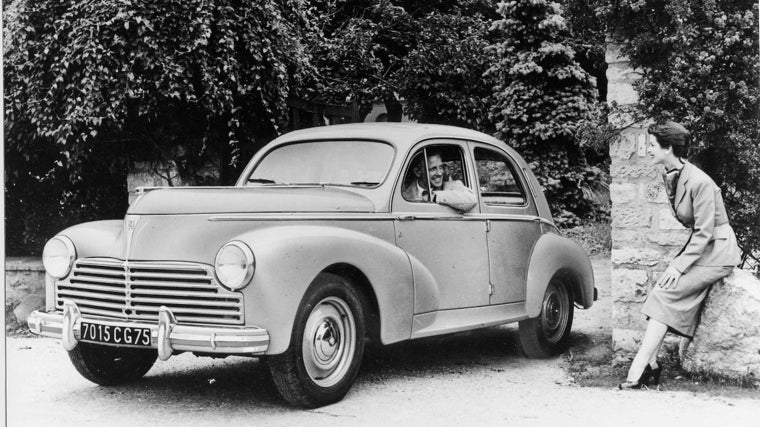 The 203 sedan had a body design inspired by the American Lincoln Zephyr
PF
The 203 sedan had a body design inspired by the American Lincoln Zephyr
PF
These Americanized lines (all the rage in a Europe liberated by American troops) and its modern design earned it immediate success, to the point that by 1950, there was a two-year wait. From a technical standpoint, the 203 was the first Peugeot to incorporate a self-supporting body. This idea of creating something completely new also appears in the engine, which boasts cutting-edge technology for a mass-market car of the time. This supersquare inline-four engine is crowned by a hemispherical Alpax cylinder head with V-shaped overhead valves. With 42 hp and 1,290 cc, this engine's potential was far from being exploited, as the manufacturer had limited the compression ratio for reliability reasons. Tuners like Constantin incorporated a supercharger and extracted 100 horsepower without compromising reliability.
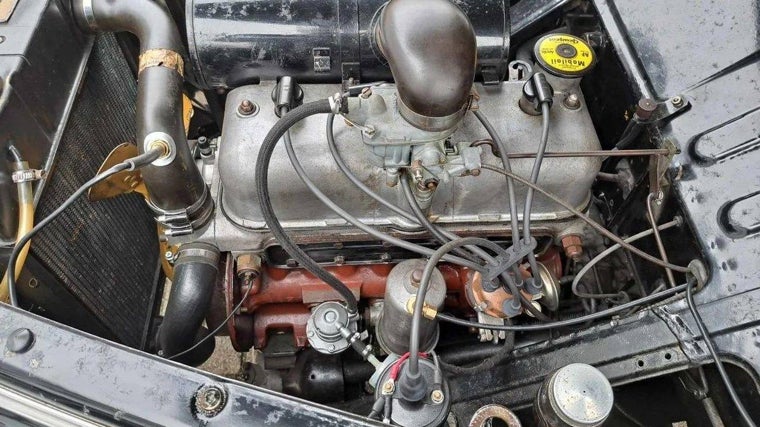 The modern and reliable engine was another of the 203's strong points.
PF
The modern and reliable engine was another of the 203's strong points.
PF
With the standard engine, it reached a top speed of 116 km/h (71 mph). At the 1952 Motor Show, power was increased to 45 hp thanks to improvements in the timing. With very reasonable fuel consumption, the 203's engine also demonstrated a robustness that was praised by all. Not so much the four-speed gearbox, the Peugeot 203's Achilles' heel, with questionable synchronization (first gear wasn't synchronized until February 1954) and its poor gear ratios, with discrepancies between first and second, as well as between second and third. Fourth was simply an overdrive, which was also surprising in that it didn't hold the car back at all when the pedal was lifted.
At its launch, the 203 gave drivers the impression of a modern car, nothing like models designed before the war. Thus, an independent-wheel front axle, a rigid rear axle (a safer solution at a time when engineers had little experience with independent rear wheels), and firm suspension resulted in good road holding. Similarly, the rack-and-pinion steering was smooth and precise, braking effectively, and, thanks to a very tight turning radius, offered excellent maneuverability.
Furthermore, the bodywork was attractive due to its highly accomplished design and its fastback-style two-box shape. It also boasted a distinctive feature: the standard sunroof. Except for the enlarged rear window and small details such as, in 1956, the replacement of the old-fashioned direction arrows embedded in the side panels with turn signals, this bodywork remained unchanged. Even until its retirement in 1960, the front doors continued to open in the opposite direction...
A year after the sedan's introduction, Peugeot launched the 203 range at the 1949 Paris Motor Show. Two new models appeared: a convertible and the Familiale, our protagonist.
While it's true that in the United States there were already family variants of sedans, the famous "station wagons," the Peugeot 203 Familiale was a pioneer in offering a model that responded to the specific European needs of families on the one hand, and of merchants and artisans, to whom a variant called the Commerciale was also aimed.
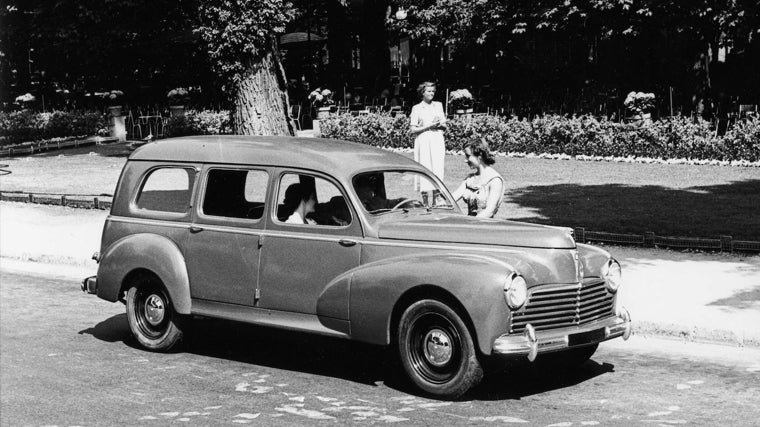 Compared to the sedan, the Familiale had a longer wheelbase and modified rear suspension.
PF
Compared to the sedan, the Familiale had a longer wheelbase and modified rear suspension.
PF
The 203 Familiale combined passenger car dynamics with cargo-carrying practicality in a way never before seen on the Old Continent. It wasn't just the rear end and roof length that changed. Compared to the sedan or saloon, the wheelbase had been lengthened by 20 centimeters (2.78 m versus 2.58 m for the saloon), and the overall length increased from 4.35 m to 4.53 m. This allowed engineers to incorporate three rows of seats, making it one of the first European mass-produced vehicles with seating for seven or eight passengers.
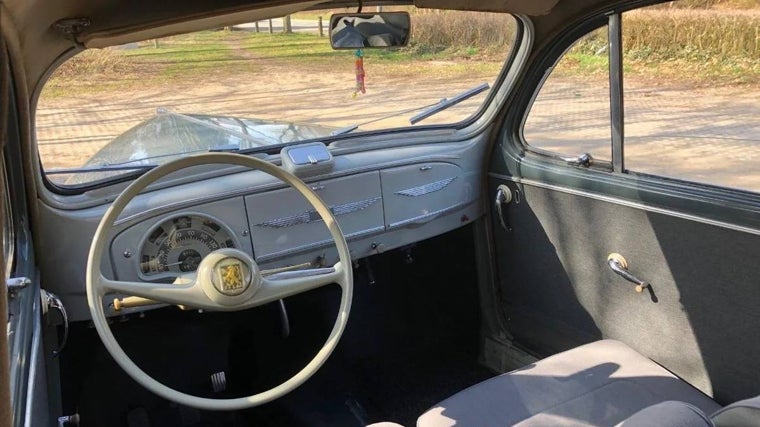 Dashboard of a 203 Familiale
PF
Dashboard of a 203 Familiale
PF
The Commerciale attracted dealers with its 450 kg payload, and the Familiale version captured the hearts of families who finally found a car that could accommodate all their members (up to six adults and two children could fit). However, one must choose between transporting passengers or luggage—the rear seats could be folded down—leading to the adoption of a roof rack on most Peugeot 203 Familiales. Onboard space was also gained thanks to a change in the suspension system, which went from coil springs to a rigid axle with longitudinal semi-elliptic springs.
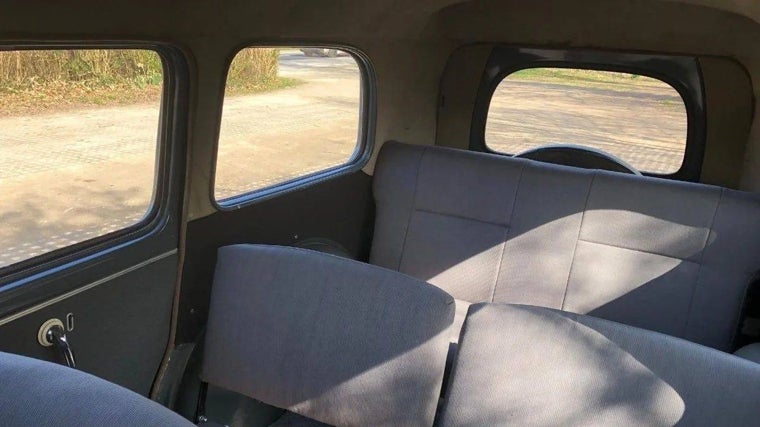 Up to six adults and two children could travel.
PF
Up to six adults and two children could travel.
PF
The 203 Familiale became popular in Western Europe and French-ruled African territories. Its rugged simplicity, easy-to-maintain engine, and renowned reliability made it suitable for rough roads. The sturdy steel body and basic suspension outperformed more complex alternatives in harsh environments. In 1956, the last Peugeot 203 Familiale rolled off the production lines after 25,218 units, according to some sources, and 23,264 others.
We end this journey through the history of the Peugeot 203 Familiale, which could seat up to eight occupants, as we began: at the wheel of another Peugeot, which, in the 21st century, allows seven passengers. The 2025 5008 is the third generation with this name, offering a mild hybrid version (145 hp), a plug-in hybrid (194 hp), and three fully electric versions: 213, 231, and the 326 hp version arriving this July.
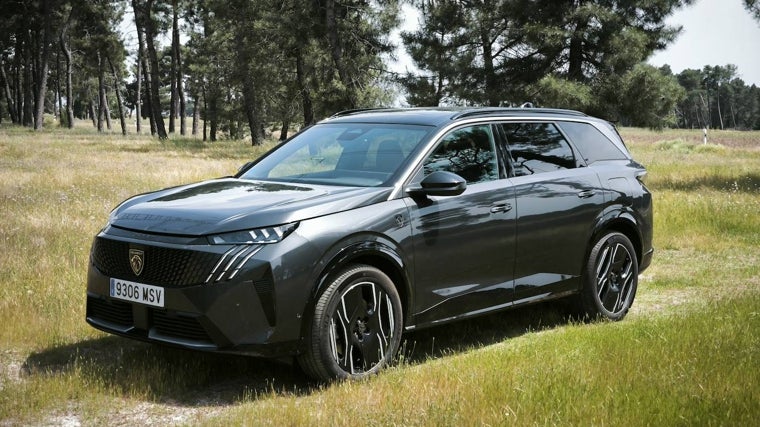 The Peugeot e5008 is the 100% electric version of this 4.79 m SUV
PF
The Peugeot e5008 is the 100% electric version of this 4.79 m SUV
PF
With the E-5008, Peugeot is launching a full-scale electric SUV segment. This represents a significant challenge in a rapidly evolving market, where the offering is multiplying and consumer expectations are rapidly changing.
From the outside, the front end is striking. The lowered grille gives it an undeniable presence. The light signature, inherited from the three-claw motif, accentuates the vehicle's feline character, a distinctive element of the brand.
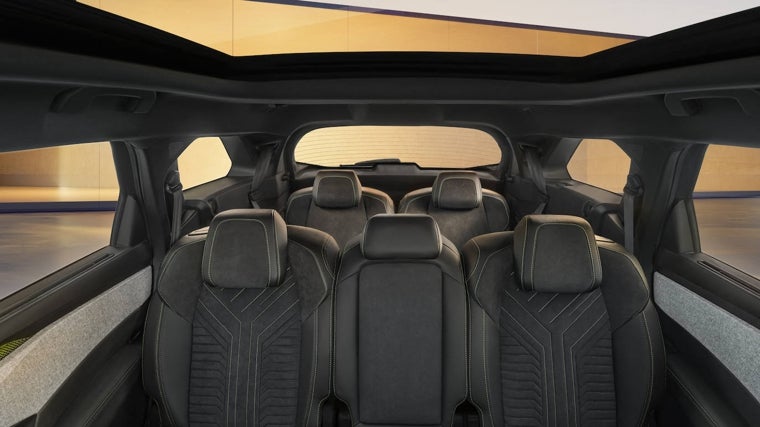 Seven places in total and a very well-used space
PF
Seven places in total and a very well-used space
PF
Exploring the interior, it becomes clear that the E-5008 is primarily aimed at families, with ample and well-utilized space. Its main advantages are its seven seats and the generous trunk space once the third row of seats is folded down. The latter is primarily designed for children. Two adults can fit, but only for short trips. The modularity of the seats, on the other hand, is a strong point: the second and third rows are operated with disconcerting ease, whether folding them down or accessing the rear seats.
As for the trunk, the loading sill is quite high, but at 748 liters, the space offered in the five-seat configuration is generous. The lower compartments allow for storing charging cables or small accessories. Up front, there's ample storage space and a large center console, a boon for onboard organization.
The attractive Smart Cockpit, with its spectacular curved floating screen with excellent resolution, the fluid interface, but the ergonomics don't make it easy to access essential controls, something increasingly common in all modern cars.
For those traveling longer distances, Peugeot offers a long-range version with increased power to 170 kW (230 hp) and a 98 kWh battery, offering up to 660 km of WLTP range. Finally, the AWD version adds a second motor on the rear axle, bringing the total power output to 237 kW (320 hp), with a torque distribution of 345 Nm at the front and 170 Nm at the rear. With the 73 kWh battery, the version tested, we have a homologated range of 500 km WLTP, with a power output of 157 kW (210 hp) and 345 Nm of torque.
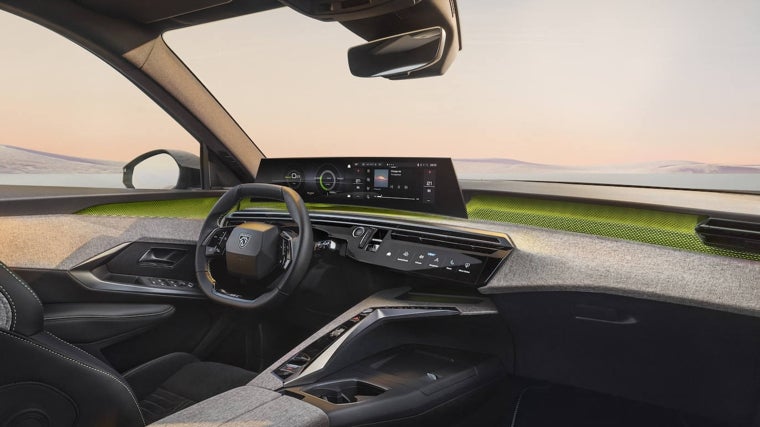 A very different panorama faces the driver of a modern Peugeot e5008 and that of a 203 Familiale from three-quarters of a century ago.
PF
A very different panorama faces the driver of a modern Peugeot e5008 and that of a 203 Familiale from three-quarters of a century ago.
PF
All versions share the same technology: permanent magnet synchronous motors, fast charging of up to 160 kW in direct current—enough to go from 10 to 80% of the battery in 35 minutes or recover 100 km of autonomy in 10 minutes—and a standard 11 kW on-board charger, with a 22 kW option for those in a hurry.
In terms of fuel consumption, we recorded 16.2 kWh/100 km on the combined cycle, a figure that rises to 21.2 kWh/100 km when accelerating. However, the E-5008 can be quite efficient with gentle handling. From the first few kilometers, the E-5008 demonstrates astonishing agility in urban environments, thanks to its tight turn-in and smooth steering.
On secondary roads, it's comfortable and has good suspension, although its extra weight and high ride height make it ideal for family driving. Far from being an SUV with overly dynamic handling, it makes up for it with a pleasantly smooth ride and predictable handling. Acceleration is good thanks to the torque of the electric motor.
There are three driving modes available. Eco mode limits performance and restricts certain features to maximize range. Standard offers an interesting balance between dynamism and efficiency. Finally, Sport mode unleashes the full 210 hp and considerably stiffens the steering.
As for energy recovery during deceleration, the system is effective. A descent from Somosierra to Madrid allowed us to recover 5% of the battery.
The Peugeot E-5008 embodies the French manufacturer's electric transition, focusing on a pragmatic offering and excellent versatility. Its generous interior space, modularity, and competitive range make it an ideal choice for families looking for a large electric vehicle for everyday use. Driving pleasure is satisfying, with good comfort and remarkable smoothness. A worthy heir to the 203 Familiale from seventy-five years ago.
ABC.es


-U84520341600wFp-1024x512%40diario_abc.jpg&w=3840&q=100)


